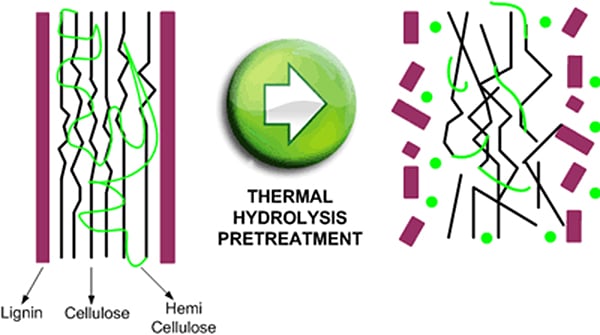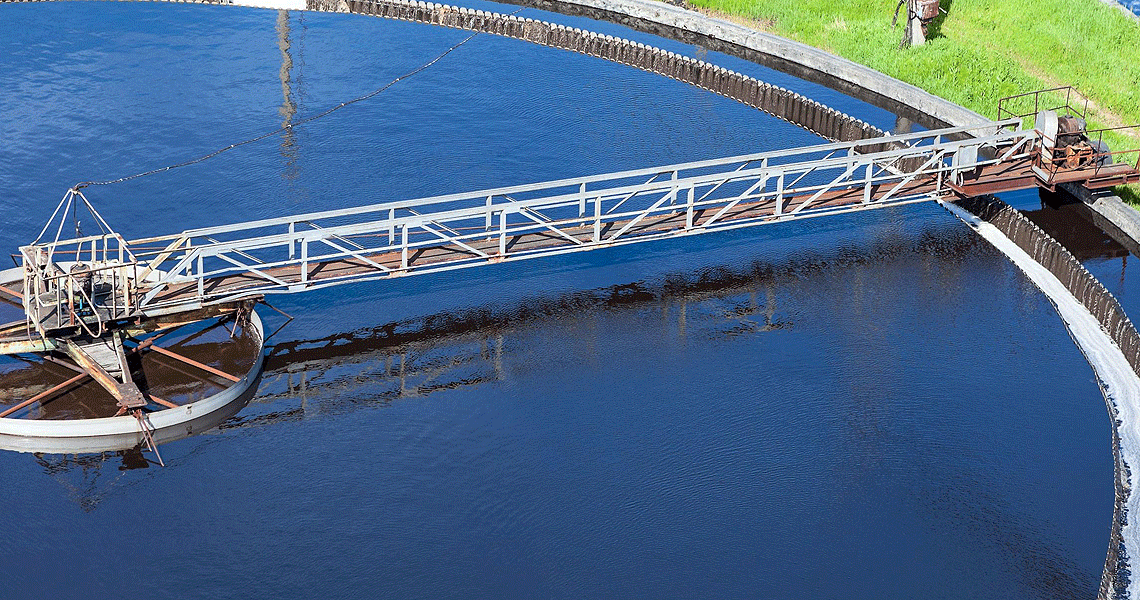Sewage Treatment
Thermal hydrolysis is a process where the long chain molecules which form cellulose and hemicellulose are broken apart using heat in order to obtain the constituent parts of the molecules. This makes it an economic pre-treatment for biomass being used to produce bioethanol or biogas.
Given that cellulosic biomass is plentiful, it has attracted interest as a bioenergy feedstock which does not compete with cultivated food crops, avoiding potential negative price effects that the use of such crops for bioenergy may cause. The technology creates the potential to use certain industrial wastes to generate energy.
HYDROLYSIS
There are three types of hydrolysis which break down the lignin barriers in biomass and break apart the cellulose and hemicelluloses molecules into sugars:
- Enzymatic: Use biological enzymes to break the structures: effective but expensive
- Dilute acid: The disadvantage of this method is that the use of acids requires expensive materials and the effluents can cause environmental problems
- Thermal treatment: Applying high temperatures and pressures can achieve the same effects; if steam depressurisation is used, the process is further improved.

Figure: Thermal Hydrolysis Pre-treatment
The thermal processes are the most promising, but have traditionally used a batch heating process with rapid steam depressurisation. This involves high capital costs and has certain operational disadvantages compared to a continuous process.
CONTINUOUS THERMAL HYDROLYSIS DEVELOPED BY HRS HEAT EXCHANGERS
Thermal hydrolysis involves heating the biomass to between 160°C and 180°C at high pressure. During this process, the biomass produces large quantities of other solid materials which have a negative effect on the efficient functioning of the heat exchangers used. To overcome this batch processing allows regular cleaning but has high capital costs as it requires special processing tanks.
Using patented HRS Unicus Series scraped surface heat exchangers overcomes many of these problems. Using a scraped surface heat exchanger makes continuous thermal hydrolysis both possible and thermally efficient while adding heat recovery by transferring the heat from the outgoing hot biomass to the incoming cold biomass provides significant energy savings.
Using the Unicus Series, HRS has patented processes of thermal hydrolysis both with and without steam explosion. Both of these processes have the following advantages:
- A continuous process allows more efficient production
- Scraped surface heat exchangers prevent fouling issues
- Energy recovery provides a significant cost reduction during operation
- The process can be applied to different raw materials
- Can be used for biogas or bioethanol production
- Technology can be fitted to existing installations in order to improve output
- Depending on the raw material used the output can be increased (to produce more biofuel) and the time for fermentation reduced (with smaller digesters)
THERMAL HYDROLYSIS WITH STEAM EXPLOSION
The biomass is firstly preheated. Following this, it is heated at high pressure in order to achieve the thermal hydrolysis. The biomass is then passed to a vessel for rapid de-pressurisation and the steam that is released from this is then used in the initial preheating phase. The hydrolysed biomass is then cooled for storage.

Figure: Thermal Hydrolysis with Steam Explosion
HRS Heat Exchangers’ products for biomass treatment
Heat Exchangers:
- Scraped Surface Heat Exchangers: HRS Unicus Series
- Double Tube Heat Exchangers: HRS DTI Series
